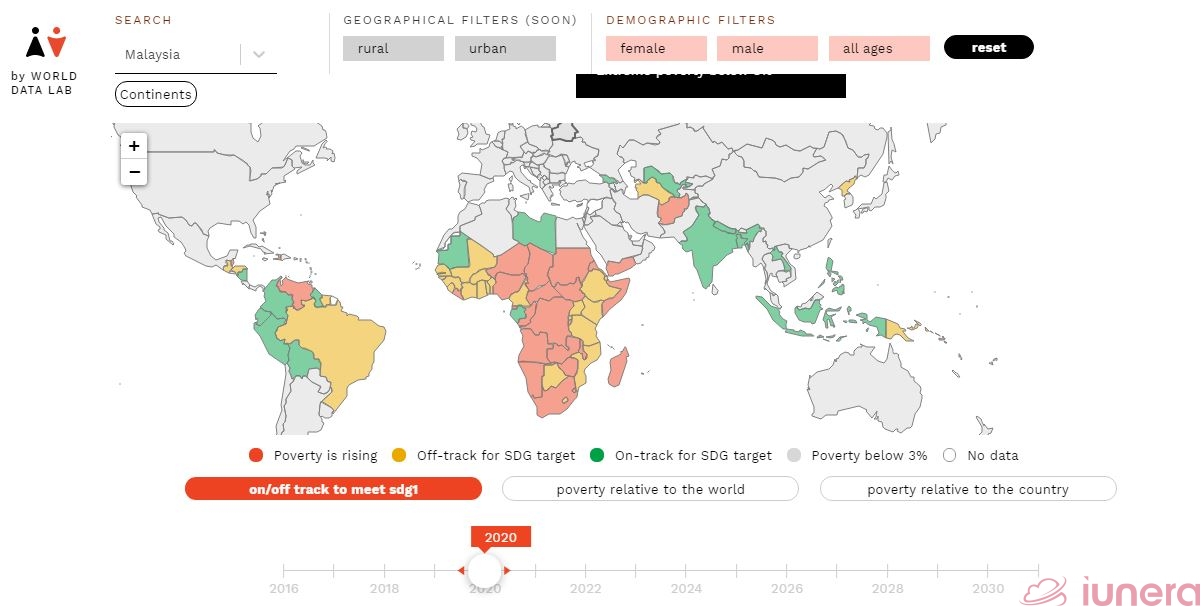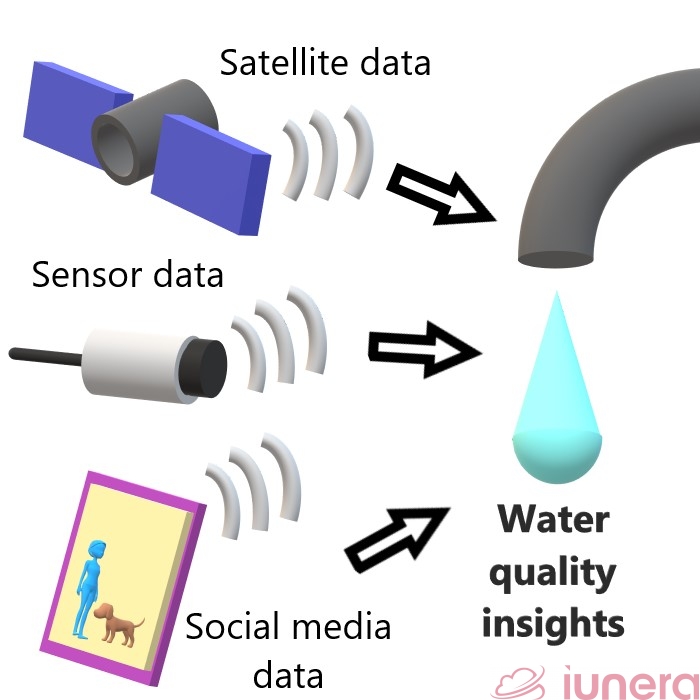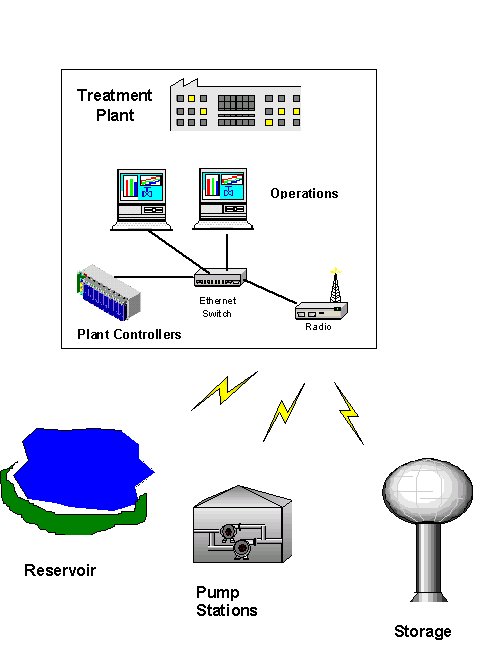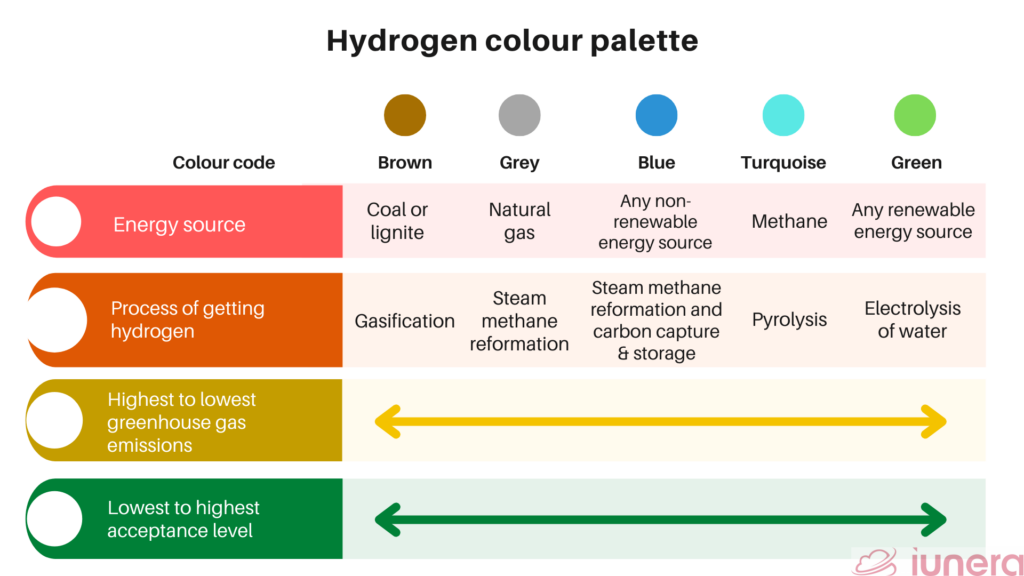The importance of sustainability use cases can’t be stressed enough, especially in the long term. But how do we know if we’re making progress and how can we make progress? Big Data-driven sustainability use cases provide the answers as they have the potential to improve the world and that potential needs to be used to the fullest. With that said, let’s jump straight into the ten use cases for achieving sustainability through Big Data.
- Big Data-driven sustainability use case 1
- Big Data-driven sustainability use case 2
- Big Data-driven sustainability use case 3
- Big Data-driven sustainability use case 4
- Big Data-driven sustainability use case 5
- Big Data-driven sustainability use case 6
- Big Data-driven sustainability use case 7
- Big Data-driven sustainability use case 8
- Big Data-driven sustainability use case 9
- Big Data-driven sustainability use case 10
- Working towards sustainability using Big Data
- Related Posts
Big Data-driven sustainability use case 1: Education
To achieve the sustainability goal of improving the provision of education in schools, large amounts of educational data are gathered daily from various sources for analysis.
The various types of educational data include both academic and non-academic data such as assessments, performance, attendance, demographics, enrollment, contact details, schedules, interests, and survey responses.
The abundance of data in the education system can inform several parties to help achieve this sustainability goal of better education in different ways. One way is through real-time and automated progress tracking. A paper about Big Data for Education demonstrated how a student’s monitoring of progress can be sped up by systematic, real-time data.
Students can go through a computerised learning software to study and take tests with instant feedback generated by supervised learning algorithms and recommendations to resources for improvement.
The teacher in charge would also receive an automated performance report from the software to know the points for improvement. This is an alternative to the teacher manually grading test papers and handing them back to the students a few days, weeks or months later.
Another way is through the personalisation of learning for individual learning needs as an alternative to the cookie-cutter approach of the same lectures, same homework and same pace for all students of various needs.
Such mining, analyses and machine learning of assessment data can quickly determine the optimal approach to teaching and personalised curricula. The students can go through the required resources and experiences using their own learning paths.
Big Data-driven sustainability use case 2: Healthcare
Another sustainability goal is to improve the healthcare system and there are numerous ways to do it with Big Data, from the heavy workload of sequencing genomes with hundreds of petabytes of data to pandemic-related actions.
Some noteworthy uses for improving healthcare with Big Data are Electronic Health Records (EHRs), real-time health tracking and Emergency Department (ED) wait times.
The EHRs are the digital version of a collection of patients’ medical records. They make it easier for different healthcare facilities to share a patient’s records with each other to coordinate care, prevent the repetition of procedures and determine a more precise and personalised treatment plan without the tedious paperwork.
To make EHRs more effective, the use of wearable trackers automate the monitoring and recording of health conditions, saving 15 hours of manual recording per week. Such trackers can also alert healthcare professionals to emergencies in real-time.
Speaking of emergencies, Big Data can also be used to predict ED congestion to find ways to minimise wait times.
Big Data-driven sustainability use case 3: Poverty
Ending poverty by 2030 is the very first sustainability goal listed by the United Nations. The first step in achieving this sustainability goal is poverty-tracking driven by Big Data Science.
A notable example of data-driven poverty tracking is the World Poverty Clock, which derives its data from a standardised global poverty database. It shows the real-time estimates of people living in extreme poverty and monitors each country’s progress towards meeting the sustainability goal of ending poverty.

By understanding what is presented in the poverty tracker, poverty alleviation efforts can then be directed to the groups in need. Big Data sources for poverty alleviation efforts include the mobile phone, satellite and biometric data.
Mobile phone data can be used as proxies to identify time-series changes in socio-economic conditions (e.g. in form of anomaly or concept drift detection). This can be done in real-time by correlating call details with wealth patterns, for instance.
Satellite data can be combined with machine learning and data analytics to identify geographically-specific poverty trends like characteristics of a house or neighbourhood that indicate wealth levels.
Biometric data can help poor communities effectively access aid and subsidies with instant identity verifications while making sure that aid doesn’t fall in the wrong hands.
Big Data-driven sustainability use case 4: Water
Obviously, a discussion about Big Data-driven sustainability can’t go on without mentioning water refinement and conservation.
The abundance of water data provides opportunities to water utilities and farmers to analyse these data and generate useful insights to make better decisions.

Internet of Things (IoT) technology plays a big part in gathering the sensor data about water supply via the Wireless Sensor Network (WSN), Supervisory Control And Data Acquisition (SCADA) and Automated Meter Reading (AMR) systems.
WSN is used to monitor water quality by measuring the water’s pH level, electrical conductivity, ORP and turbidity. By checking if the water’s pH is neutral, conductivity is low, ORP is high and turbidity is zero, utilities can ensure that the water is safe for public consumption.
In contrast, if the WSN detects any deviation from these standards, it means that the water is polluted and needs to be attended to ASAP!
SCADA is spread throughout the water supply system for sensing and communication. It can inform operators and managers if the water treatment facility is secure and in top condition without needlessly putting patrollers on shift.

Image Source: International Society of Automation
AMR can also remove the trouble of manual meter reading and billing by automatically gathering and transferring data to the database.
All the WSN, SCADA and AMR data about water quality, treatment plant conditions and meter readings are combined in one Big Data system, where data miners can extract issues such as:
- whether the water is safe to use
- which areas of a region is the water not safe to use
- which areas of a region has water leakage or disruption
- which areas of a region lack access to sanitised water supply
- for how many households are the water reserves enough to serve
- the implications of water supply problems on communities
- telling farmers to know precisely how much water they need to add to the crops for crop yield, cost and water usage optimisation.
Big Data-driven sustainability use case 5: Garbage
An iunera Big Data project assessed if Big Data can be used to track the movements of rubbish collection trucks, predict when and which rubbish bins need to be emptied and locations of irregular waste.
The truck movements determine the amount of fuel used which costs money and air quality. Thus, Big Data’s role here is to process and clean data to evaluate the various options of routes and recommend routes that are the most productive, low-cost and efficient in the long-run.
To optimise the sweeping and emptying of rubbish bins, IoT sensor data can be used to detect whether the rubbish bins are full and need to be emptied. It can also help with forecasting when the bins are likely to become full, so that cleaning can be scheduled in advance.
Machine learning can be fed with data on how full the rubbish bins were and when. Subsequently, this time-series data of rubbish-bin filling status can be used as a foundation for machine learning forecasts.
A sweeper then only has to visit the bins when the machine learning forecasts tell the sweeper to do so. Each time the sweeper visits the bins, the machine learning forecasts can be updated. The work gets done with less effort. IoT sensor data analysis can also be leveraged to locate hotspots of irregular waste.
Big Data-driven sustainability use case 6: Public transport
This is a sustainability use case we’re obsessed with! We know that the lack of convenience in public transport systems can easily deter people from using it but public transport seems to be the only option for people without cars to travel.
This leaves them no choice but to go through the stressful, tedious and troublesome experience of commuting by public transport. That’s why more work needs to be done to improve public transport using Big Data tech, especially with regards to crowding levels and waiting times since they are important aspects of public transport convenience, with or without the pandemic.
Passengers can refer to public transport occupancy data to avoid crowds. Such public transport occupancy data can be derived from counting the number of passengers in trains and buses in real-time using people counting tech. Meanwhile, punctuality can be computed by comparing the arrival and departure times of passengers and vehicles using the smart card and vehicle location data.
Such computation of punctuality or delays can point public transport operators to the multiple factors of delays that they need to address. At the same time, delays can be predicted using machine learning to become more prepared for delays.
Big Data-driven sustainability use case 7: Cyclist protection
Big Data can help protect cyclists through bicycle-centric navigation and bicycle-friendly city design.
The best bicycle navigation requires a rich combination of mobile data, on-bike sensor data, satellite data, weather data, AI-based voice processing and personalised multi-dimensional bicycle navigation algorithms.
- The mobile, sensor, satellite and weather data are cleaned, normalised, merged and distilled into a model which captures cyclist behaviour.
- Since it’s distracting to hold the phone while cycling, AI-based voice processing allows cyclists to find the best routes without typing.
- Unlike bi-dimensional car navigation algorithms, multi-dimensional bicycle navigation algorithms are based on personalised cycling experiences.
Big Data-driven sustainability use case 8: Clean energy

Clean energy is a hot topic and definitely a use case to include in this list. There are numerous ways to leverage data for clean energy:
- Machine learning can be combined with satellite and historical weather data to make weather forecasts, which can be used to optimise energy production.
- Using ground-level sunlight intensity data to send a repair alert, solar plants can be supervised without manual on-site supervision.
- Estimating the costs of renewable energy required to produce a certain amount of green hydrogen based on the technical, financial, energy market and meteorological data.
- Figuring out the production, storage, delivery and sales of green hydrogen.
- Estimating the consumption of energy from heating or cooling a house based on the number of people detected and for how long they will be there.
- Predicting when the fueling of buses is required based on the data of the bus routes, where the hydrogen fueling stations are and how much fuel is left in the tanks.
Big Data-driven sustainability use case 9: Climate action
A discussion about Big Data-driven sustainability also can’t go on without mentioning climate action.
Some examples of data-driven climate action initiatives show how Big Data is useful in assessing environmental risks and figuring out the next steps in protecting the environment:
- Google Earth Engine combines satellite imagery and geospatial datasets to detect changes on the Earth’s surface over time.
- Surging Seas provides data on the rising sea levels, coastal flood risk, tides, storms, and tsunamis throughout the USA.
- Researchers at Harvard University and the UK’s National Oceanography Centre used Big Data and advanced stats to investigate over 100 years of changes in ocean temperature.
Big Data-driven sustainability use case 10: Airline recovery
Although airlines have been badly affected by the Covid-19 recession, a Big Data-driven airline recovery is just 5 steps away:
- Track global pandemic progress by looking at real-time data of Covid-19 cases worldwide and determining if the data indicates recovery or deterioration globally.
- Track regional and sub-regional progress by zooming into each region, sub-region and country for the same data and determining the status of that area.
- Identify air route reactivation by comparing the progress of different countries and determining which routes to activate first.
- Check global air travel demand to determine the next steps for marketing and sales.
- Check customer-specific air travel demand to determine targeting efforts.
Working towards sustainability using Big Data
Big Data and machine learning mechanisms are required to deal with the complexity of the data related to sustainability, from its variety of formats to its variety of sources.
The capacity of Big Data Science to improve analysis and decision-making appeals to various types of organisations including those involved in ensuring sustainability.
There are so many ways Big Data can make a big difference to sustainability initiatives, and the ten use cases mentioned are among them. And there’s no denying that the responsible application of Big Data in sustainable development can more effectively measure the progress of sustainability efforts and bring them to greater heights.
